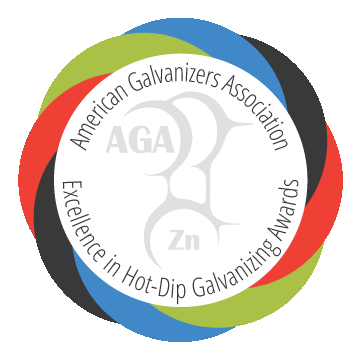Holocaust Memorial Name Plates
Skokie, IL United States | 2009
 2009
2009
Menu • Quick Links • Search
In the very unlikely event you travel through the small town of Myakka City in Southwest Florida; one might expect to see sparse housing, farmland, or acreages of grazing animals. What you would likely not expect to see would be a 120-acre lemur reserve. The Myakka City Lemur Reserve is 120 acres of various woodlands, marsh, and wetlands providing a variety of habitats for more than 52 lemurs from six species.
The cathodic protection of hot-dip galvanizing would provide the required longevity, and the ease of specifying, turnaround time, and appearance met LCF's mission.
Naturally, lemurs only live in Madagascar, an island off the coast of Africa. There are believed to be more than 100 species and sub-species 40 of which are considered vulnerable, threatened, or endangered. For this reason, there is very little data and limited research on the lemur. However, the lemur's natural habitat is increasingly threatened due to hunting, and deforestation in Madagascar. The Lemur Conservation Foundation (LCF), which operates the reserve, is a non-profit corporation dedicated to the preservation and conservation of the primates through captive breeding, scientific research, education and art.
LCF practices conservation for the lemur through captive breeding and allowing the lemurs free-range areas within the reserve. The goal of the reserve is to provide the lemurs with an environment as close to their natural habitat as possible. The reserve also promotes education. The Myakka City Lemur Reserve (MCLR), with its natural, free-ranging environment, similar to the native habitat in Madagascar, allows students to learn important field methods in studying these creatures. MCLR also works with local schools to educate students about lemurs and the importance of their survival. Finally, the reserve makes the lemur colony available for non-harmful scientific and behavioral research.
LCF desired an observation tower to present researchers with the opportunity to study the lemurs from the tree canopy where they live. The tower will not only be used by scientists and researchers, but also by the lemurs themselves. Lemurs will climb, rest, and travel on the aerial highways branching from the platform to the trees. Therefore, the goal was for the tower to not only be functional, but in keeping with the LCF mission, also aesthetically pleasing and safe. With that in mind, the Natalee Lee Quay Lemur Lotus Tower was designed with hot-dip galvanized steel.
DB Welding and Fabrication partnered with the foundation to build and install the tower structure. They worked closely with the engineering and design team to meet the requirements of the reserve. The most important consideration was the welfare of the lemur, so the tower needed to be safe and improve their habitat to promote long-term growth. With that and the Florida climate in mind, it was imperative to select a corrosion protection system for the structural steel tubing, pipe, angle, and plate with durability, but also the ability to blend with the surrounding environment and remain aesthetically pleasing. DB Welding believes there is no equal to hot-dip galvanized steel for corrosion resistance of steel structures exposed in the environment. The cathodic protection of hot-dip galvanizing would provide the required longevity, and the ease of specifying, turnaround time, and appearance met LCF's mission.
In order to support the LCF, many hours of design, engineering, fabrication, galvanizing, and installation were done free of charge or at a reduced rate. The need for maintenance to this structure due to corrosion will be minimal, so the animals and facilities will not need to be disturbed. This will be a significant cost savings for the facility and allow future donations to be appropriated to further conservation and benefit to the lemurs rather than upkeep. Madagascar's lemurs, one of the most threatened mammal groups on earth, may have a fighting chance of survival due to the efforts of the LCF, companies, and individuals like the team assembled for this lemur lotus tower project.
2015
Newly Complete
Civic Contribution
Tropical Marine
Myakka City, FL United States
Aesthetics, Coating Durability, Corrosion Performance, Ease of Specifying, Initial Cost, Life-Cycle Cost, Prior HDG Experience, Quality of HDG
Tubing, beam, angle, steps, and platform landings.
Steel: 16
HDG: 16
The Lemur Conservation Foundation
Michael Wyshock and Mark Anderson
Ringling College of Art and Design
DB Welding and Fabrication
Valmont Coatings - Tampa Galvanizing
Thank you! Your vote has been accepted.